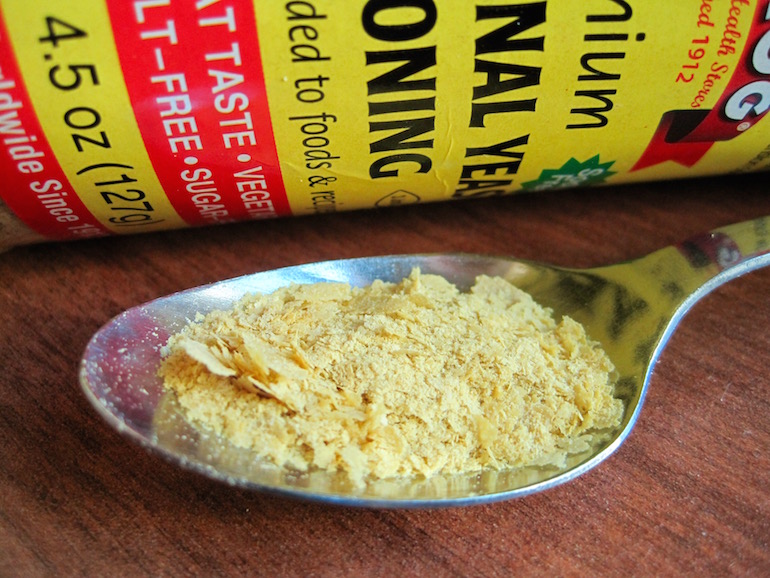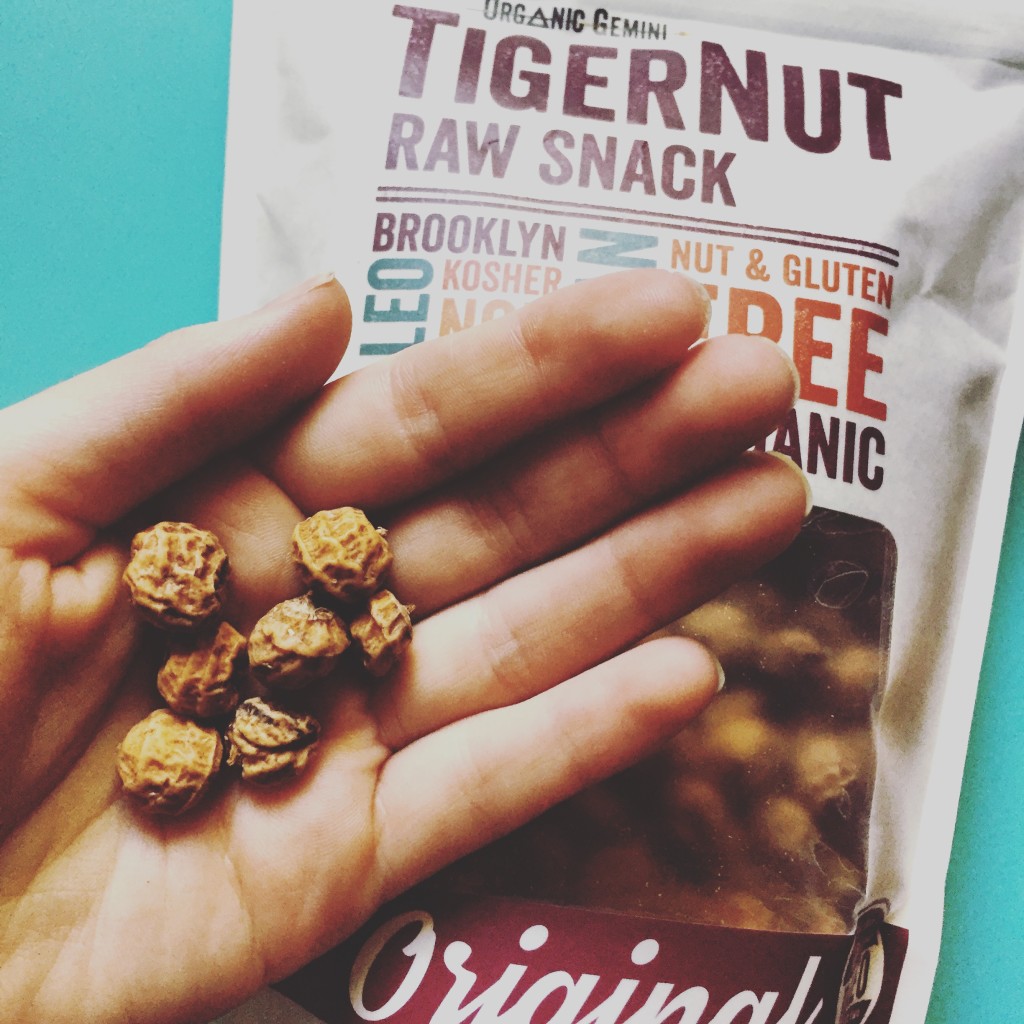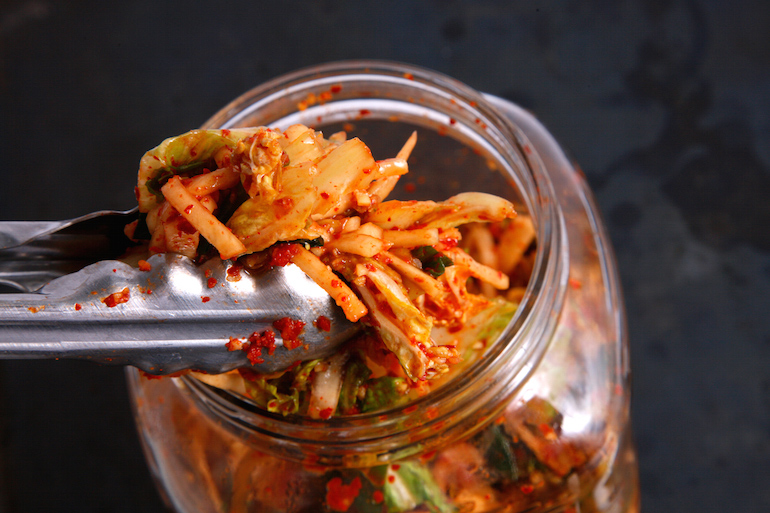Ever see weird items in health food stores and wonder what they do? Here are a few strange ones that you should be eating. They may look odd, but they are nutritional powerhouses that will make you feel super healthy and in the know.
Nutritional Yeast

Photo by Rachel Dyckman
It may sound icky, but nutritional yeast is actually really tasty, super versatile, and has some awesome health benefits. Nutritional yeast is essentially brewer’s yeast that has been dried and deactivated. It has a nutty, slightly cheesy flavor and is a fabulous source of vitamin B-12, which is often lacking from vegetarian and vegan diets. A whopping 9 grams of protein are found in just two tablespoons of these magic flakes along with folic acid and fiber.
Nutritional yeast has become so popular that WholeFoods made a whole blog post about it that you can find here. Nutritional yeast makes a great cheese substitute and popcorn topping. It can also be added to cooked veggies, tofu dishes, pasta dishes, dressings, sauces, and essentially anything and everything. For a list of 23 things you can make with nutritional yeast, check out this BuzzFeed article.
Tiger Nuts

Photo by Rachel Dyckman
Tiger nuts are a trendy new superfood on the market. They allegedly made up 80% of our Paleo ancestor’s diets two million years ago, and are an excellent source of iron, zinc, magnesium, potassium, vitamin c, and vitamin e — just to name a few. In fact, tiger nuts contain as much iron as red meat and as much potassium as coconut water.
What really takes tiger nuts over the edge of the proverbial superfood cliff is that they contain this amazing type of fiber called resistant starch, a prebiotic that resists digestion and feeds all of that good bacteria in your gut (probiotics). Resistant starch is believed to help with diseases of the digestive tract as well as help prevent a number of other ailments. The resistant starch in tiger nuts also helps you feel full and satisfied, thus encouraging weight loss or maintenance and the suppression of appetite.
Allergic to nuts? Fear not, tiger nuts are actually not nuts at all, but root vegetables. Beware not to overdo it, though — one ounce of tiger nuts contains a whopping 40% of your recommended daily intake of fiber.
Kombucha

Photo by Rachel Dyckman
This fermented tea beverage is definitely an acquired taste and may take some getting used to, but it is great for digestive health, mental clarity, and detoxification. There is even speculation that the Glucaric acid present in Kombucha may help to prevent cancer.
As with anything, be careful not to overdo it with the Kombucha — it contains trace amounts of alcohol and due to its acidity, drinking too much can be counterproductive.
Although there has been some controversy in the scientific community about Kombucha’s health benefits, Kombucha has been around for thousands of years, and some people swear by it. Originating in Asia, the Kombucha craze spread to Russia and eventually the U.S., where you can now purchase it in health food stores across the country.
#SpoonTip: President Reagan drank Kombucha to aid in stopping the spread of his cancer in the 80s.
Kimchi

Photo courtesy of chowhound.com
Kimchi is a Korean delicacy consisting of pickled cabbage, garlic, salt, ginger, chili pepper, and various spices and seasonings. It sounds weird but it tastes good, and it’s packed with nutrients and health benefits. Due to the fermenting process used to make kimchi, it contains beneficial probiotics that promote gut health.
Kimchi is also low-calorie, low-fat, high in fiber, and a great source of vitamin C and vitamin A. Kimchi is the Korean version of chicken soup — some believe it can cure anything from an upset stomach to SARS.
Seaweed

Photo by Rachel Dyckman
If you’ve ever eaten sushi or miso soup, chances are you are at least semi-familiar with seaweed. But did you know that seaweed is one of the few foods that contain iodine, a nutrient that is critical for thyroid health? In fact, iodine is so rarely found in foods naturally that in the 1990s, the World Health Organization (WHO) developed a program to iodize salt in order to prevent extreme iodine deficiency. Noshing on some seaweed from time to time will give you an extra iodine boost, plus mild iodine deficiency is difficult to detect and relatively common in the U.S..
Aside from providing iodine, seaweed is also believed to help regulate estrogen levels and prevent inflammation. Add some seaweed to a salad, soup, stir fry, or eat it straight from the bag. You can find all kinds of interesting snacks at health food stores that are made with seaweed, along with multiple varieties like kelp, dulse, wakame, and nori.
Kumquats

Photo courtesy of wikipedia.com
Kum-whats? Kumquats look like mini oranges and are a tart, slightly sweet citrus fruit. Just 8 kumquats contain 10 grams of fiber which regulates the digestive tract and cleanses your system, allowing for maximal nutrient uptake.
Kumquats also contain lots of vitamin C and a special combination of antioxidants and vitamins that are ideal for overall skin health, wrinkle prevention, dry skin, and dark spot correction. Kumquats are a good source of calcium as well as beta-carotene, making this tiny fruit a bone and eye health booster.
You can pop the whole fruit in your mouth, peel and all — everything is edible, minus the seeds.


